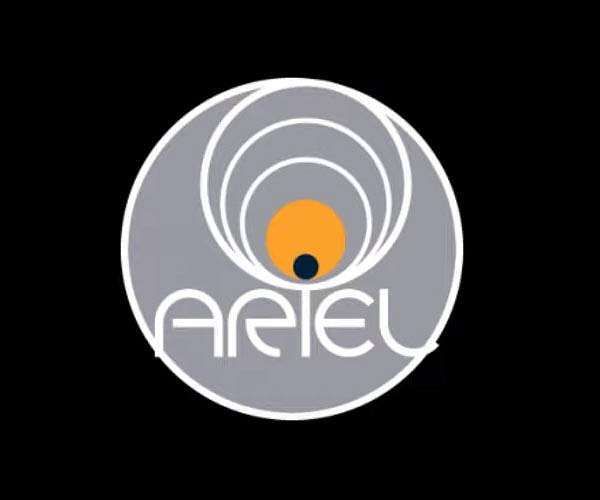28.07.2024

The surface of Uranus' moon Ariel contains substantial carbon dioxide ice, particularly on its trailing hemisphere, the side that faces away from its orbital motion. This is unexpected as carbon dioxide, even in the distant Uranian system-20 times farther from the Sun than Earth-easily sublimates into gas and escapes into space.
Researchers propose that the carbon dioxide on Ariel's surface might originate from interactions between the moon's surface and charged particles in Uranus' magnetosphere. This process, known as radiolysis, involves the breakdown of molecules by ionizing radiation.
However, a new study published on July 24 in The Astrophysical Journal Letters suggests a different possibility-carbon dioxide and other molecules could be emanating from within Ariel, potentially from a subsurface ocean.
Utilizing NASA's James Webb Space Telescope, Richard Cartwright and his team from Johns Hopkins Applied Physics Laboratory (APL) in Laurel, Maryland, analyzed the moon's chemical spectra and compared them with laboratory-simulated chemical mixtures. They found that Ariel has some of the highest concentrations of carbon dioxide in the solar system, with deposits on the trailing hemisphere reaching at least 10 millimeters (0.4 inches) thick. Additionally, they detected carbon monoxide.
"It just shouldn't be there. You've got to get down to 30 kelvins [minus 405 degrees Fahrenheit] before carbon monoxide's stable," Cartwright said. Ariel's surface temperature, meanwhile, averages around 65 F warmer. "The carbon monoxide would have to be actively replenished, no question."
Radiolysis might explain some of this replenishment. Lab experiments show that radiation hitting water ice mixed with carbon-rich materials can produce both carbon dioxide and carbon monoxide, accounting for the abundance of these molecules on Ariel's trailing side.
Nonetheless, there are still many unknowns about Uranus' magnetosphere and its interactions with the moons. Voyager 2's flyby of Uranus nearly 40 years ago hinted that such interactions might be limited due to the 58-degree offset between Uranus' magnetic field axis and the moons' orbital plane. Recent models have supported this idea.
Most carbon oxides could instead stem from ongoing or past chemical processes in a subsurface ocean beneath Ariel's ice. These could escape through surface cracks or eruptive plumes.
Moreover, new spectral data suggest that Ariel's surface might also have carbonate minerals, salts formed through the interaction of liquid water and rock.
"If our interpretation of that carbonate feature is correct, then that is a pretty big result because it means it had to form in the interior," Cartwright said. "That's something we absolutely need to confirm, either through future observations, modeling or some combination of techniques."
Ariel's surface, marked by canyons, grooves, and smooth regions likely from cryovolcanic activity, has led researchers to suspect ongoing or past geological activity. A 2023 study by APL's Ian Cohen suggested that Ariel and/or its sister moon Miranda could be emitting material into Uranus' magnetosphere, possibly through plumes.
"These new insights underscore how compelling the Uranian system is," Cohen said. "Whether it's to unlock the keys to how the solar system formed, better understand the planet's complex magnetosphere, or determine whether these moons are potential ocean worlds, many of us in the planetary science community are really looking forward to a future mission to explore Uranus."
In 2023, the planetary science community, through its Planetary Science and Astrobiology decadal survey, prioritized the first dedicated mission to Uranus, raising hopes for a scientific expedition to the ice giant.
Cartwright sees this as an opportunity to gather crucial data about ice giants and their possibly ocean-bearing moons, which could also apply to exoplanets in other star systems. It's also a chance to get definitive answers only possible by exploring the system. For instance, most of Ariel's observed grooves, thought to be openings to its interior, are on the trailing side. If carbon dioxide and carbon monoxide are leaking through these grooves, it could explain their abundance on Ariel's trailing side.
"It's a bit of a stretch because we just haven't seen much of the moon's surface," Cartwright cautioned. Voyager 2 captured only about 35% of Ariel's surface during its brief flyby. "We're just not going to know until we perform more dedicated observations," he said.
Quelle: SD
